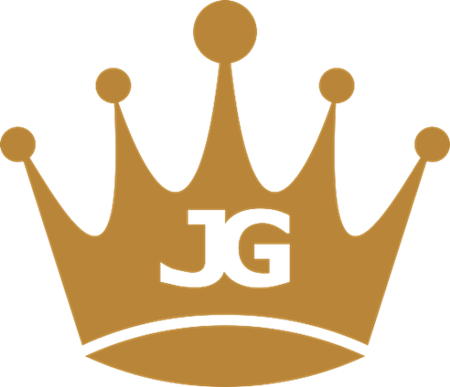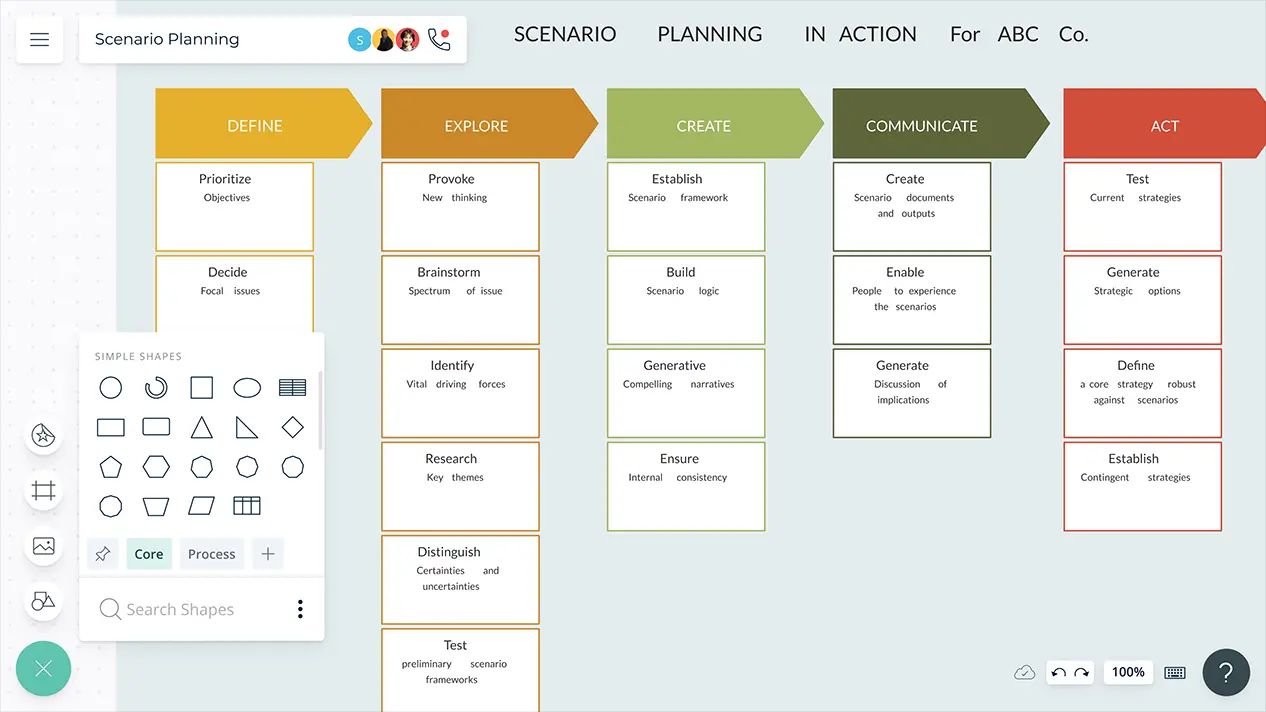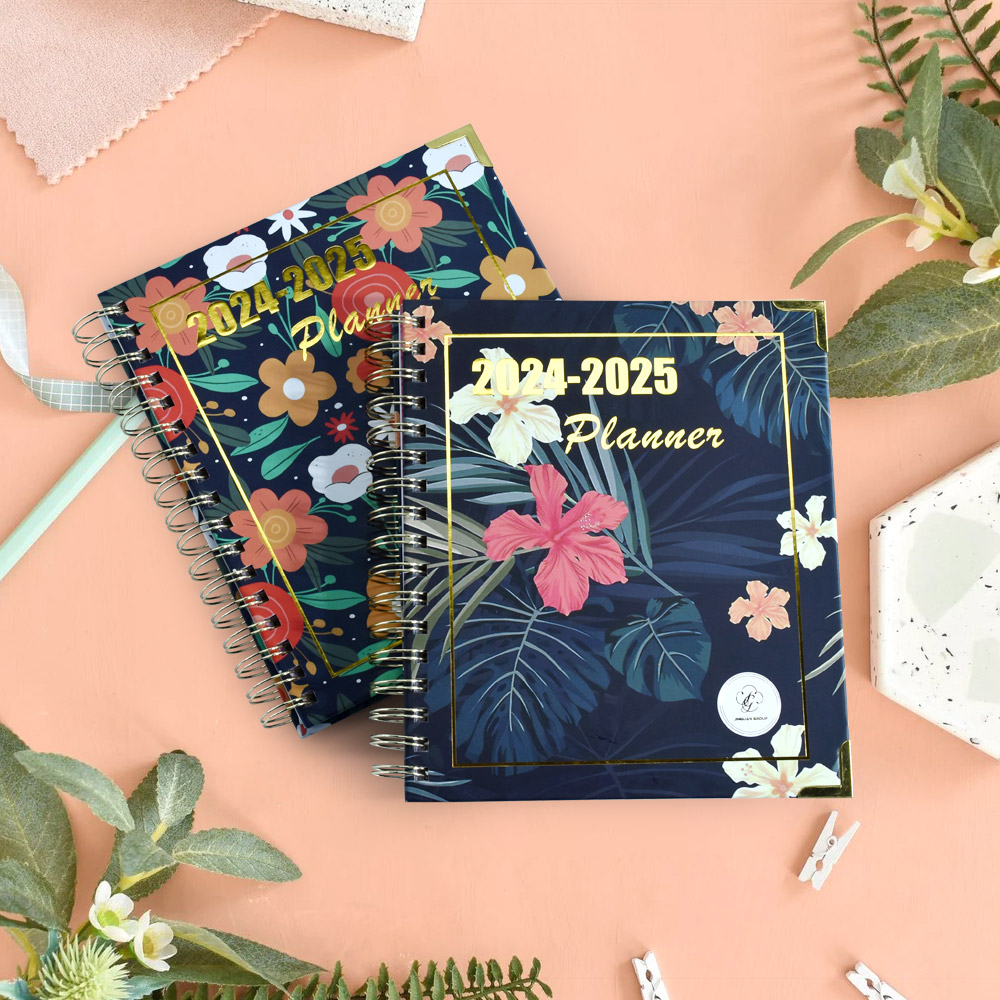By Emma MacMillan, Studio Manager
The Science of Ink in Print Production: What You Need to Know
The purpose of this month’s article is to help you understand how detailed and complex the print production process truly is, and the value of working with someone who has the expertise to ensure your job is handled correctly. There is an enormous difference between a high-quality print production job and simply sending your files to a local franchise print shop. Today, we open the doors of our Art/Production Department to give you an exclusive behind-the-scenes tour of what the print production process looks like at BluePrints.
The Role of Graphic Design in Print Production
Graphic design is defined as the arrangement of type and visual elements along with specifications for paper, ink colours, and printing processes that, when combined, convey a visual message.[1] The graphic design stage includes concepting, page layout, typography, illustration, photography selection, colour decisions, and producing final computer files.
Note: While it is tempting to hire a freelance graphic designer to create materials that can be sent directly to a low-cost printer, not all graphic designers know how to properly prepare files for printing. Once a design is approved, the files must be “packaged”. Unless the graphic designer is trained in production management, the odds increase substantially for a less-than-satisfactory print job. The reasons vary from missing fonts and/or images to the use of incompatible software, for example. This generates delays, cost overruns, unanticipated proofing rounds, late-stage design changes, and sometimes disappointment over the finished job. Meticulous attention to detail at each step of the process is necessary to avoid these kinds of issues.
Custom Printed Notebooks | Jinguan Printing
Essential Facts About Artwork Creation in Print Production
Creating artwork requires taking multiple factors into account. Here are some of the most important elements to consider:
Selecting Proper Design Software to Optimize Your Print Production
Art must be prepared in the software that is best suited for the particular task, and in a version that is compatible with the selected print shop. If the print shop uses a newer or older version than what the art file was created with, you can run into problems. Some of the industry’s standard applications include: Illustrator, a drawing program to create logos or illustrations; Photoshop, a pixel-based program to manipulate photos; and InDesign, a page layout program to create a single or multi-page document.
Accurate layout
Usually, files need to be built at actual size and use bleed space when appropriate. (This eliminates room for errors with the printing estimate and final printed result.) If a file is not built correctly, the printer will have to spend time (and therefore charge you a fee) to readjust files to fit the correct specifications of the job.
Approved fonts
The fonts should be consistent with your brand standard and must be included with the files sent to the printer. If the printer does not have the font used in the artwork, and it has not been included with the packaged files, the printer may simply choose to substitute the fonts, producing something that is probably similar but not what you actually approved.
Tips for Selecting Suitable Image Resolution in Print Production
Images need to be high-resolution and large enough to fit within the assigned space. The resolution should be 300 dpi (dots per inch). Anything smaller than that might result in a loss of quality.
Precise color
As with the fonts, the colours and general tone of the piece should be consistent with your brand. That said, never trust the colours of a piece being designed on a computer as the actual colours that will turn out once printed! The reason is that a computer screen and paper printing use 2 different types of processes, RGB and CMYK, to create actual colours:
RGB (Red, Green, Blue) is an “additive colouration” mode. Think of a computer screen with a black background. In order to see the colours, some lights of red, green, and blue are “added” to the black background. RGB is typically used to render colours on monitors and computer screens.
CMYK (Cyan, Magenta, Yellow, Black) is a “subtractive colouration” mode. It is intended to be applied to print on white or colored paper, and calculates the correct hues by “subtracting” from the initial brightness of the paper. The CMYK coloration mode is intended for use in paper printing applications and printing specific, exact colours.
CMYK is also referred to as “process colours,” which is different from spot colours (also called PMS – Pantone Matching System). CMYK uses four different colours inks (Cyan, Magenta, Yellow, and Black) overlapping each other to achieve the full colour spectrum. To print any multicoloured image, the same four colour inks are used. The press runs four times to apply each ink individually.
Spot colours are pre-mixed inks that are applied only to the area assigned for each particular colour. For example, to print a blue, brown, and red image, pre-mixed blue, brown, and red inks are used. In this case, the printing press runs only three times, which reduces printing costs. Click here to read more about spot colours.
We work on-site with the printer to ensure that the final printed product matches your brand colours as closely as possible, and we advise on colour corrections along the way if necessary.
Effective File Naming Strategies for Seamless Print Production
Files must be named to allow printers to work more efficiently. For example, make sure there are no unusual characters in the file’s name, or it may cause a printer to crash. They should be labelled with the correct extension: .ai for Illustrator, .indd for InDesign, etc. Perhaps this sounds elementary to some, but we have learned that this simple step significantly expedites the process.
File preparation to release for print
Before the artwork can be sent to the printer, here are a few steps we use to ensure the files are prepared correctly:
Use of preflight software: Preflight software helps collect all the fonts and images, search for missing items, and avoid mistakes.
Verification of page size settings and bleeds: Incorrect page settings cannot be fixed by simply scaling up or down, so make sure the document size is the final trim size. Bleed photos and other graphics that extend to the edge of a page must be set up to overlap the trim margins by 1/8th inch to avoid white along the edge.
File cleanup: Cluttered files not only confuse and frustrate printers, but they also compound the possibility of errors. Make sure to remove unnecessary artwork, delete unused colours, and verify that all the colour names match exactly across all programs. An oversight, such as not specifying whether a colour is CMYK or PMS (or spot colours), might change the overall colours of a piece or even turn a four-colour job into a more expensive five-colour job by mistake.
The Quote Process – Communication with vendors is key
We always communicate with our vendors early in the process and negotiate the best prices for our clients without sacrificing quality. We discuss topics covering the purpose of the materials we will be printing, the final size, the quantity needed, the deadline, etc. All of this information is essential to determine the best type of press to be used (digital or offset), schedule press time, order paper, etc. Here are some of the elements we take into consideration:
Size: dimensions of the piece (flat and final size)
Stock: weight, finish, grade name, and colour of the paper
Inks: number and types of inks and varnishes (four-colour process, PMS colours)
Bleed: a 1/8th inch extension to the edge of a page
Proofs: review of PDF and hard-copy versions
File format: This information is very important to make sure the print shop can support our software/application and can open the files
Finishing: type of trim, score, fold, assembly, and seal if applicable
Printing and mailing or shipping date: this step is very important to determine which vendor and what kind of budget best suits the project
Prepress and the proofing process
Prepress refers to all the print production functions that take place from the moment the files are sent to the printer to the actual printing. These functions might include some of the following: receiving media files, creating proofs for review and approval, making any final changes/edits, creating the plates for the offset press, etc. At BluePrints, we use a 3-step final proofing process:
Step 1: PDF proof (review copy/elements/fonts) – We request a PDF proof of the artwork from our vendors. This allows us to proofread the content one last time and make sure the piece contains no mistakes. It also lets us make sure the text hasn’t shifted or the images haven’t moved while the printer processes the files.
Step 2: Hard-copy proof (review colour match/paper) – We then receive a hard-copy printout, which lets us see the final document, check for discrepancies, and clarify how the layout is intended to look.
Step 3: On-location press-check – Upon approval of the hard-copy proof, we go to the print shop for a final press-check in order to approve the paper, inks, varnishes, colours, etc.
Printing (offset vs. digital)
Printing is the mechanical process of applying ink to paper using an offset or digital press. The offset press is the most cost-effective way of producing large volumes of printed materials, while the digital press is more commonly used for smaller volumes and lower production costs. It is important to understand that the final product will look slightly different when printed digitally vs. offset, as well as from printer to printer. Proper and consistent paper selection is also a critical component of the process because colour appears distinctively on different paper stocks and with or without finishes (varnish, aqueous coating, etc.). So when you need to reprint, it is best to use the same methodology, on the same paper, with the same finishes, at the same printer to match the original run as closely as possible. As part of our service, we have skilled production managers who oversee the process to ensure great and consistent outcomes.
Bindery/Finish
After a job is printed, the next stage includes one or many steps depending on the end product: cutting/trimming, folding, laminating, scoring, perforating, stitching, and binding. The last step in the bindery stage includes packaging for delivery.
From Print to Post: How BluePrints Ensures Quality Every Step of the Way
Most jobs are shipped to our clients directly or delivered to a specialised facility called a mail-house or “letter-shop” when materials are to be mailed on behalf of the client. In this stage, the addresses are computer-imprinted from the customer’s mailing list database onto the printed piece, then sorted and prepared for delivery to the post office.
As you can see, the print production process is very detailed and requires a certain level of experience and expertise. Most importantly, at BluePrints, we monitor the jobs in person, from start to finish, to ensure that the highest standards are met, your brand is represented through quality materials, and that you always receive the utmost value for your investment.
Mastering the Stages of Print Production Workflow: From Design to Final Output
In today’s highly visual business environment, printing production is no longer just a basic operational task—it’s a critical factor in shaping brand identity, user experience, and market performance. Many people ask, what is print production? Simply put, print production refers to the complete process from a design file to the final printed product. This includes several important phases known as the stages of print production, such as proofreading, color correction, press setup, printing, and post-press finishing.
A well-organized print production workflow follows a standardized system to ensure there’s no gap between the designer’s vision and the final output. For businesses, understanding the mode for print production is essential—it means knowing whether to choose digital printing, offset printing, or screen printing as the most effective approach.
When you delve deeper into production printing, you’ll see it’s quite different from regular desktop printing. It focuses on high-volume output, consistency, and color accuracy—making it ideal for applications like advertising, packaging, and publishing. There are many compelling print production examples, such as branded brochures, hardcover books, and product packaging, which show the true impact of high-quality print.
However, to achieve excellent results, it’s crucial to follow the printing right process. Choosing the right paper, ink, equipment, and finishing techniques will ensure that every detail is up to standard. Understanding the full print process—from design submission, prepress, proofing, printing, to binding—helps streamline production and minimize costly errors.
Whether you’re new to the industry or looking to refine your skills, having a solid grasp of print and production fundamentals is a vital step toward professionalism. While the print production definition may sound simple, behind it lies a multi-phase system that requires precision, coordination, and expertise.



